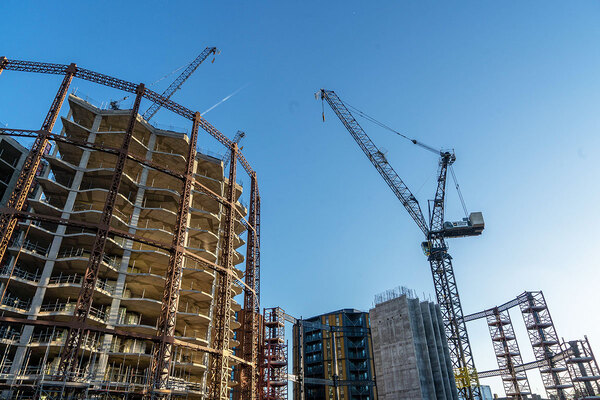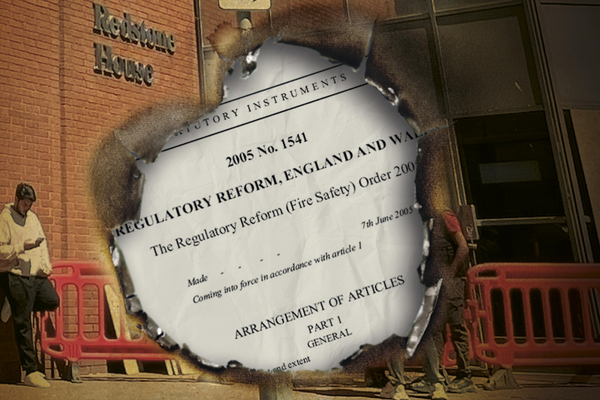You are viewing 1 of your 1 free articles
London’s social housing is held back by constraints on rents
Reintroducing rent convergence is the single most effective way to begin addressing long-standing inequities, write Ian McDermott and Grace Williams
Housing associations and councils are wholly committed to investing in the quality of residents’ homes, but we are operating in an environment of rapidly escalating costs, especially in London.
The squeeze on London boroughs’ budgets means they’ll need to cut £269m in housing spending over the next four years.
At the same time, social rents in the capital remain unsustainably low. The average rent for a social home with a G15 landlord is just £128 a week. Such constraints on rental income ultimately dictate the scale of investment we can deliver.
Operating costs are significantly higher in London, regulatory requirements continue to rise and are often harder to meet, and the capital’s particular stock of older, denser and often taller housing adds further financial strain.
This is before we even consider the cost of building new homes.
London’s government and its not-for-profit housing associations are strongly pro-housing growth, and the social housing sector must be a vital part of the delivery landscape for the new homes needed.
The challenge is stark. The new target for London of 88,000 homes a year is more than has ever been delivered in a single year, and the equivalent of building an entire borough’s worth of homes every 16 months.
“The new target for London of 88,000 homes a year is more than has ever been delivered in a single year”
The capital’s land values, construction costs, infrastructure demands and planning requirements are significantly higher than in most other parts of the country.
Recent analysis highlights how the upfront cost of building London’s housing target of 88,000 new homes a year is roughly 43 times higher than meeting the equivalent local target in the West Midlands. Rent policy needs to account for such regional disparities.
London Councils and G15 members agree that reintroducing rent convergence with a £3-per-week mechanism from April 2026 is the single most effective way to begin addressing these long-standing inequities and reduce funding shortfalls.
As not-for-profit landlords, we reinvest the income we receive in homes, services and management costs. G15 members spend around £2bn every year maintaining and improving homes.
This figure will continue to rise with the introduction of the updated Decent Homes Standard and minimum energy efficiency requirements. With rent levels the way they currently are, investing in existing homes and building the new social homes London needs is hugely challenging.
Rent convergence is most needed in London. Less than 10% of London homes are at the government’s target social rent, compared with 35% nationally. In some regions, more than half of homes are already at target rent: 54% in the South West and just under 53% in Yorkshire and the Humber.
London’s social housing providers are therefore operating at the sharpest end of the problem, with the largest gaps between actual rent levels and target social rent levels alongside the highest operating costs in the country. G15 members alone have 225,000 homes below target rent, creating a rental shortfall of £167.6m last year alone. This is unsustainable.
Analysis by London Councils shows that a £3-per-week mechanism could generate an additional £588m for council housing budgets over five years, and £1.78bn over 10 years. This would allow councils to invest in existing homes, fund essential maintenance and go some way to accelerating the delivery of new social housing.
With one in 50 Londoners currently living in temporary accommodation, costing councils in the capital £5.5m a day, the need for investment in new social and affordable homes has never been greater.
“London’s social housing providers are operating at the sharpest end of the problem”
Perhaps it’s time for a review of what powers and mechanisms London needs to succeed. As part of this, the wider rent setting system could be reviewed to ensure it remains fair, transparent and sustainable in every area.
The regulator currently sets its social rent target level based on data from 1999 and uprated over time, but the approach doesn’t account for the specific challenges and much higher costs in the capital, meaning rental income no longer generates sufficient capacity for London’s social landlords to invest.
A London-specific rent formula or additional flexibility would therefore support improved standards, fairness and long-term sustainability for social housing.
The Autumn Budget offers a decisive moment. With the right settlement, we can help the capital recover from what is a very challenging position – by providing better homes, improving services and helping to pay for the social housing Londoners need while protecting affordability for residents.
Without convergence at £3 a week in London, not-for-profit housing associations and councils will continue to see resources drained at a time when investment in safety, energy efficiency and new homes has never been higher.
The options put forward in the government consultation will not see the increased investment needed in London, and with one in five social rented homes located in the capital, the consultation outcome here will have a national impact.
The time to secure a fair, sustainable future for London’s social housing is now – and a £3 convergence mechanism is an essential foundation for making that happen.
Ian McDermott, chair, G15 and chief executive, Peabody, and Grace Williams, executive member for housing and regeneration at London Councils
Sign up for our development and finance newsletter
Already have an account? Click here to manage your newsletters
Latest stories









